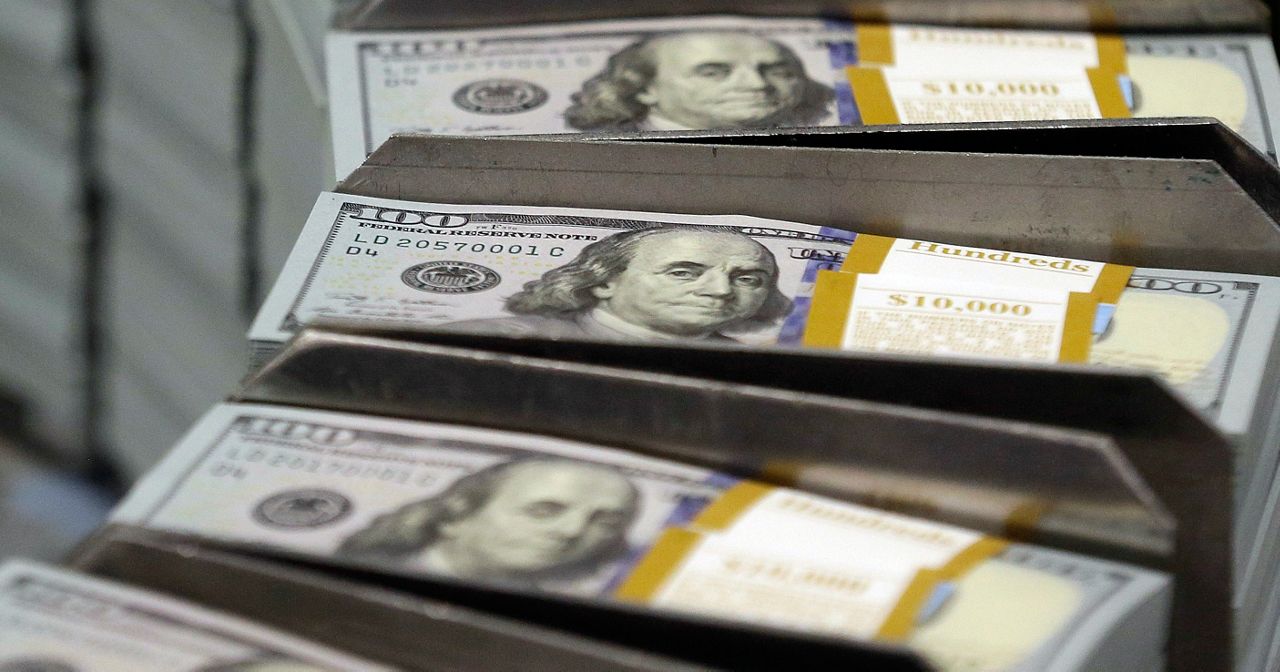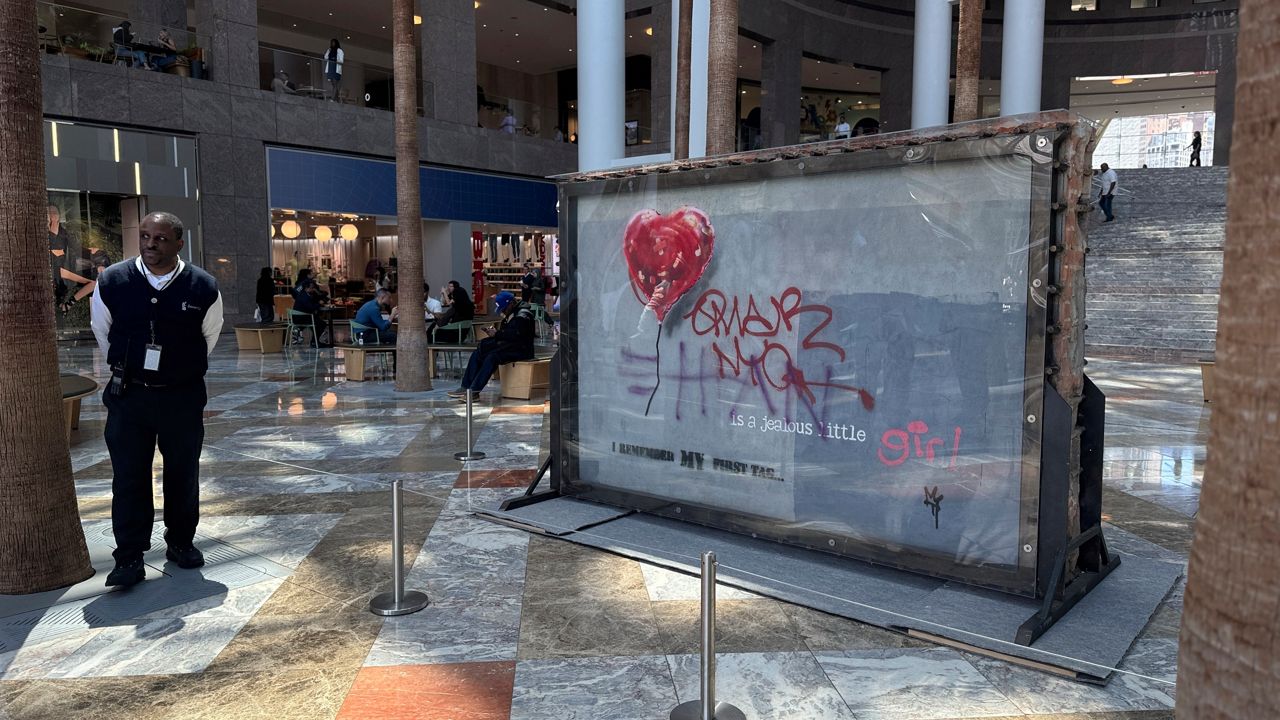The city's economy is thriving, but manufacturers are not.
The number of companies actually making things here has been falling for decades.
In the middle of the last century, more than a million people worked in manufacturing in the city.
Today, according to The Center for an Urban Future, there are fewer than 70,000 people.
Despite this, a Queens company is not just surviving, but thriving.
Sussman Automatic employs 60 people, most of them in Long Island City.
“In the last year we’ve hired about six people, so we’re in a growth spurt right now,” said Sussman Automatic President Michael Pinkus.
Workers on their assembly line make electric steam boilers.
But the success of Sussman has been anything but automatic. It was only possible because of adaptation.
The company was founded in Manhattan more than 100 years ago when Arthur Sussman invented a way for irons in the Garment Industry to get an endless supply of steam. Then, most of the city's Garment Industry lost steam and moved away.
“We had to reinvent ourselves into two new industries,” Pinkus explained.
The company developed new uses for steam technology.
Now, it makes equipment for steam rooms, under the brand name Mr. Steam, and industrial boilers. The products are used for sterilizing hospital devices and even for manufacturing drugs.
“A company our size is inherently nimble,” said Pinkus.
Embracing new technology like the touchpad control for a steam rooms before it was proven has also been key to persevering in a difficult manufacturing terrain.
“You can go anywhere else in this country and have a cheaper environment for both labor for real estate, for electric prices,” explained Jonathan Bowles, the Executive Director of the Center for an Urban Future.“You can go anywhere else in this country and have a cheaper environment for both labor for real estate, for electric prices,” explained Jonathan Bowles, the Executive Director of the Center for an Urban Future. The think tank says local manufacturing jobs continue disappearing but at a slower pace than before.
According to report from Bowles and The Center for an Urban Future, seen below, between 2000 and 2018, the number of manufacturing jobs in New York City declined by 60 percent, going from 172,481 jobs in the third quarter of 2000 to 69,564 jobs in the third quarter of 2018 (a loss of 102,917 jobs). During the same 18-year period, there was a net gain of 737,253 private sector jobs in New York City (a 24 percent increase).
The job losses in NYC's manufacturing sector have not been as severe in more recent years, but there has still been a decline.
Over the last 10 years (2008 to 2018), the number of manufacturing jobs citywide declined by 25,757 (a 27 percent drop). During the same period, private sector jobs in NYC increased by 673,039 (a 22 percent jump).
Since the end of the great recession (2011 to 2018), manufacturing jobs in NYC are down by 5,398 (7 percent). During the same period, private sector jobs citywide are up by 664,512 (21 percent),” said Jonathan Bowles, of the Center for an Urban Future.
“We’ve got to do what we can to protect these good middle class jobs,” said Bowles.
Sussman Automatic says it's not going anywhere, even though it gets larger and larger offers to sell its building in what has become a hot Real Estate market in Long Island City. The company's President says relocating would be just too disruptive to the company and to its growing staff.
“We are interviewing and ah we’re looking for talent,” said Pinkus.
Sussman Automatic is an unusual success story and the Center For An Urban Future says it’s optimistic about companies like it that have embraced new technology, but there is concern that the next recession will put new pressure on the local manufacturers that remain.
NYC Manufacturing Job Trends
Center for an Urban Future
by Jonathan Bowles
April 10, 2019
Between 2000 and 2018, the number of manufacturing jobs in NYC declined by 60 percent, going from 172,481 jobs in the 3rd quarter of 2000 to 69,564 jobs in the third quarter of 2018 (a loss of 102,917 jobs). During the same 18 year period, there was a net gain of 737,253 private sector jobs in NYC (a 24 percent increase).
The job losses in NYC's manufacturing sector have not been as severe in more recent years, but there has still been a decline.
Over the last 10 years (2008 to 2018), the number of manufacturing jobs citywide declined by 25,757 (a 27 percent drop). During the same period, private sector jobs in NYC increased by 673,039 (a 22 percent jump).
Since the end of the great recession (2011 to 2018), manufacturing jobs in NYC are down by 5,398 (7 percent). During the same period, private sector jobs citywide are up by 664,512 (21 percent).
In the most recent time period (2011 to 2018), two boroughs have seen a slight uptick in manufacturing employment. In Brooklyn, manufacturing jobs increased by 1 percent -- with employment in the sector increasing from 19,543 to 19,741, an increase of 198 positions. In Staten Island, manufacturing employment is up by 13 percent--with employment in the sector increasing from 1,197 to 1,350, an increase of 153 positions. (Please note that while Staten Island saw a larger percentage gain, the borough still has relatively few manufacturing jobs, and the 13 percent increase representing an increase of just 153 jobs.)
From 2011 to 2018, manufacturing employment declined by 13 percent in the Bronx (a net loss of 850 positions), by 11 percent in Queens (a net loss of 2,334 positions), and by 10 percent in Manhattan (a net loss of 2565 positions).
In 2000, Manhattan accounted for 41 percent of all manufacturing jobs in NYC. In 2018, Manhattan's share of the total was down to 34 percent. Meanwhile, Brooklyn increased its share, from 25 percent of the city's manufacturing jobs in 2000 to 28 percent in 2018.
Food manufacturing has bucked the overall trend and has been adding jobs in NYC at a fairly healthy pace. Since the end of the Great Recession (2011 to 2018), food manufacturing jobs in NYC are up by 21 percent, increasing from 14,276 jobs to 17,322 jobs (an increase of 3,046 positions). The biggest overall job increase in food manufacturing took place in Brooklyn, which added 1,247 jobs in food manufacturing (an increase of 23 percent). The greatest percentage gain was in Manhattan, where food manufacturing jobs increased by 38 percent (a net gain of 1,123 positions).
Between 2011 and 2018, food manufacturing jobs increased in every borough.
The worst performing manufacturing sector has been apparel manufacturing. Between 2000 and 2018, apparel manufacturing jobs in NYC declined by 80 percent, declining from 58,029 jobs in the third quarter of 2000 to 11,681 in the third quarter of 2018, a decline of 46,348.
The decline in apparel manufacturing jobs has continued even in recent years. Between 2011 and 2018, apparel manufacturing jobs in NCY declined by 30 percent, with employment in the sector declining from 16,577 to 11,681 (decreasing by 4,896 positions).









